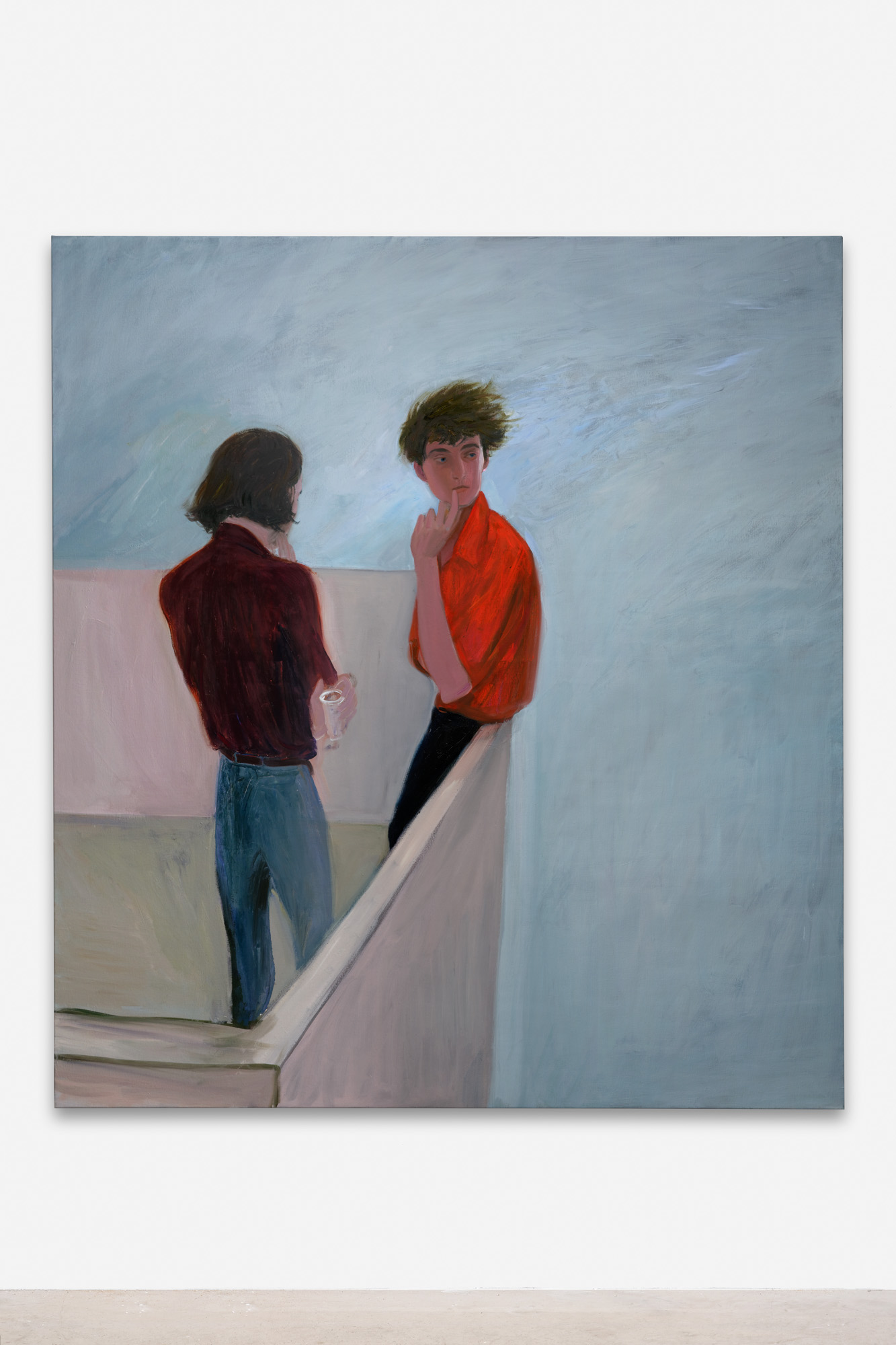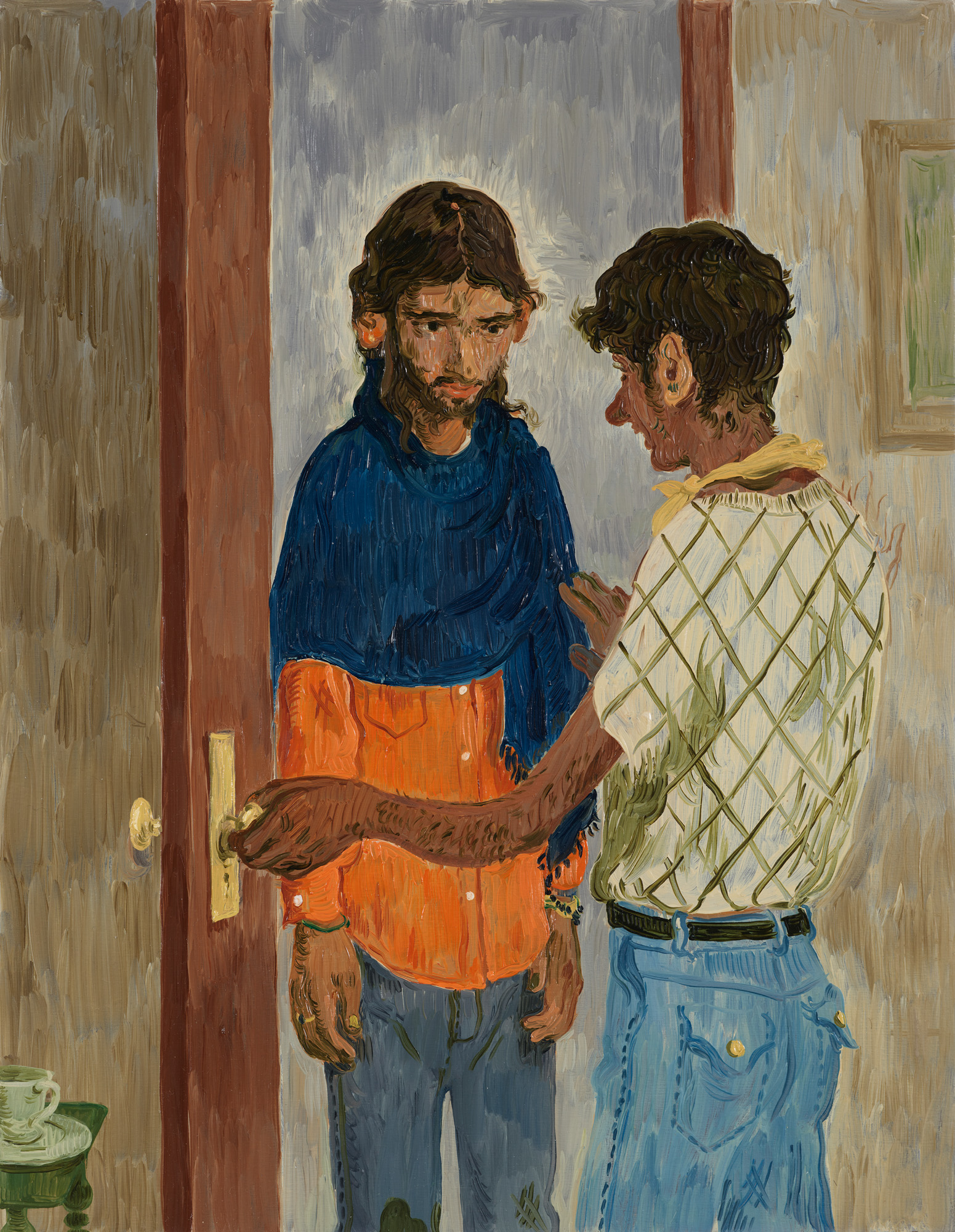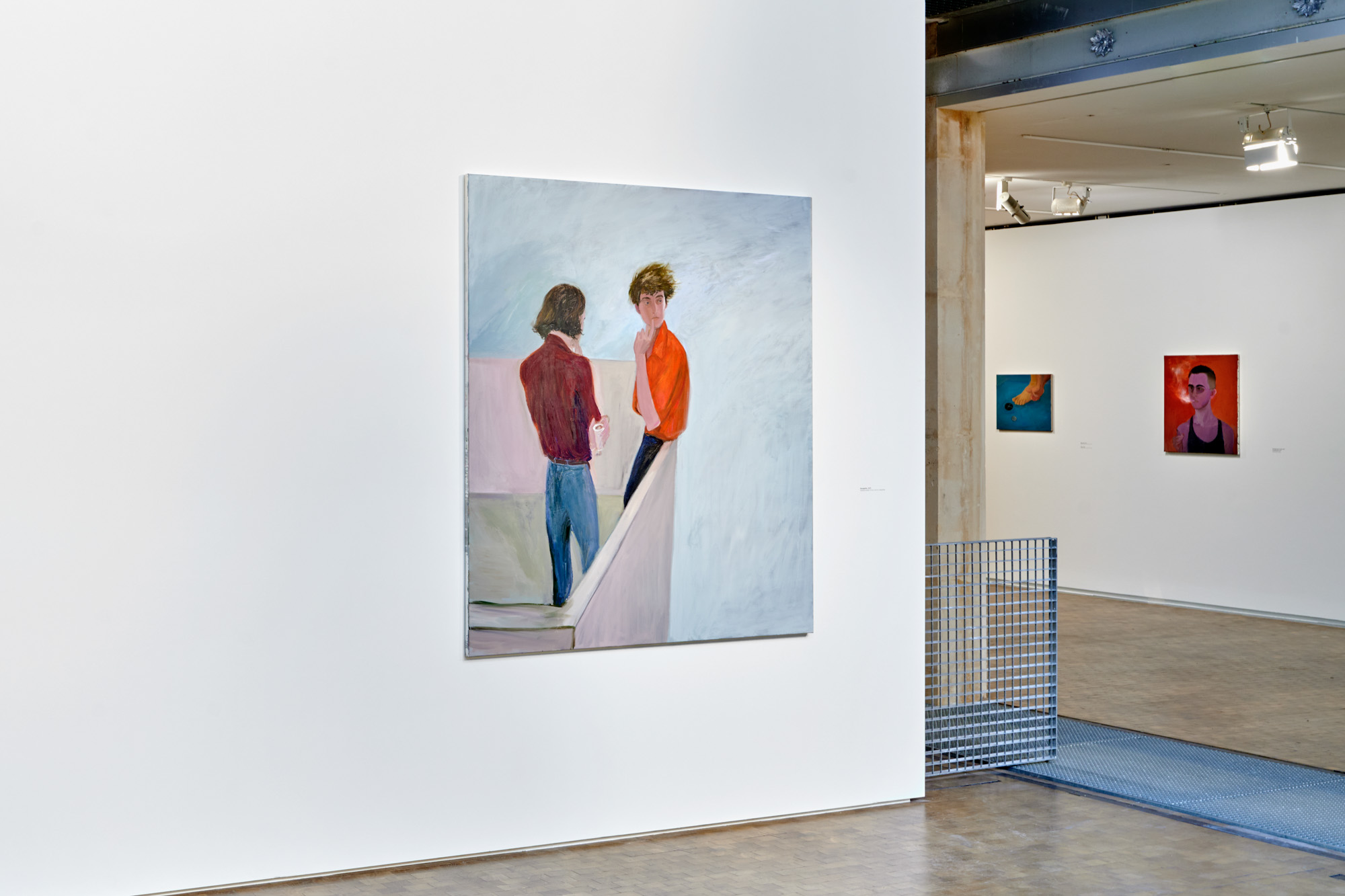Ideas
Side by Side: Xinyi Cheng and Salman Toor


We often do not appreciate something until it is lost. As we inch closer and closer to the third anniversary of the Covid-19 pandemic, this overused maxim is once again proving to be true. While the pandemic pushed us to find innovative ways to interact with each other despite our distances, painters Xinyi Cheng and Salman Toor poignantly remind us of the physical proximity and connection we previously took as a given.
Chinese-born artist Xinyi Cheng’s oeuvre explores the nuances of desire, memory, and intimacy. Following her move to Paris in 2017, she began to chronicle, through painting, male friends-turned-muses reenacting scenes from her recollection or imagination. Like a thin chiffon veil, Cheng’s signature flat, murky color palette hazes over Parapetto (2021), lending it a dreamlike quality. The curious title is Italian for “parapet”—the low protective wall along the ledge of an accessible roof. The work is meticulously composed to create a palpable tension, and it is above all the characters’ glaring lack of interaction that demands our attention.

Our eyes are immediately drawn to the character at the center of the painting, outfitted in a bright red shirt, hair flitting in the wind, eyes evasive. He leans dangerously against the parapet but his mind is preoccupied with thoughts other than safety. The other figure stands a foot or so away, his slouched back turned towards the audience—a visual and physical barricade that excludes us from complete access to the situation.
Cheng offers us a single glance into this moment and its vague narrative—the man in red is leaning and looking away, arms crossed, suggesting a mental departure from his companion. While their bodies occupy the same space, neither seem present with the other. Yet it is this non-interaction that makes us feel the most. Cheng isolates a single juncture of stillness from the restlessness of our breakneck lifestyles, allowing us the space to breathe, to reflect. She reduces male intimacy to its most rudimentary, minimal expressions, and forces us to be satiated with this depiction of a fleeting, ephemeral moment.

The Arrival (2019) by New York-based artist Salman Toor depicts a similarly tense connection between its subjects: an interaction devoid of words and action that is just as wistful and emotional, demanding itself to be felt by its viewers. Like Cheng, Toor paints the men around him, his depictions bolstered by a mixture of memory and imagination. He challenges the historical and ongoing exclusion of queer brown men from art history by interweaving aspects of Pakistani, American, and queer culture into his intimate and vulnerable depictions of young gay men of color.
As hinted by its title, the painting portrays a man standing before another, behind an open apartment door. Draped in a navy shawl, this man appears dejected and numb; his eyes glazed over and his shoulders heavy. The figure holding the door open with one arm has his back turned away from the audience, like in Cheng’s Parapetto, but here we are presented with a sliver of his expression, making him a more accessible character than Cheng’s mysterious figure. While Parapetto may be implying an inward withdrawal, The Arrival suggests a return via both its title and the man’s gesture of holding the door open, beckoning his companion to enter the apartment. His hand reaches outward and a warm expression is hinted from the fraction of his face we are able to see.
As much as Cheng’s murky colors provide a hazy texture suggestive of how we recollect our dreams, Toor’s tactile approach, with his strokes visible on the surface, grounds his painting in reality. Furthermore, compared to Parapetto’s airy, undefined open space, the inconspicuously ordinary interior space in The Arrival is also more grounded in the real world. The apartment here can be read as an allegorical space of refuge, a domestic environment in which marginalized bodies can exist in safety and relative comfort. For Toor, identity is inherently political. His painterly depictions are acts of political protest in a society where male friendships and partnerships are only safe from hostility when in petto.

Both Cheng and Toor’s works appeal to the human desire to be confronted with, to be wanted, to be acknowledged. Parapetto and The Arrival present their subjects as aloof and distant, absorbed in a temporary moment only they—and we—have access to. The viewer is drawn in into the moment as much as they are excluded from the narrative. As invisible witnesses privy to a singular juncture between two people’s relationship, we can only absorb what has been presented to us and conjure up our own speculations. In those momentary, split-second interactions, these men are oblivious to the world, and the world is oblivious to them.
Ella Wong was ArtAsiaPacific’s editorial intern.







